Childe Hassam (October 17, 1859 – August 27, 1935) was a brilliant American painter who had a unique impressionist style. In particular, the way he used color is inspirational. Few artists have the ability to push such rich and vivid colors without the painting appearing jarring or overdone.
Hassam was a busy artist, producing over 3,000 paintings, etchings and lithographs over the course of his career. He practiced both oil and watercolor painting, though I must say I am more of a fan of his oil paintings which really demonstrate what is possible with color.
Take the painting below for example. It is an incredibly busy interior scene with a vast range of colors. But it all seems to balance. Hassam skillfully danced between muted greens, oranges, grays and smaller areas of vivid yellow and greens.

Hassam was clearly very skilled in drawing, which is partly why he was able to be so adventurous with his colors. If your drawing is not on point, then you may need to make up for it with more accurate colors.
Another observation is that Hassam used accurate values in most of his paintings. So his accurate values combined with skillful drawing meant he was able to really push the color saturation whilst retaining a quality of realism, resulting in these intricate displays of color.
Anyway, enjoy the rest of these paintings by Childe Hassam. Let me know your favorite in the comments.










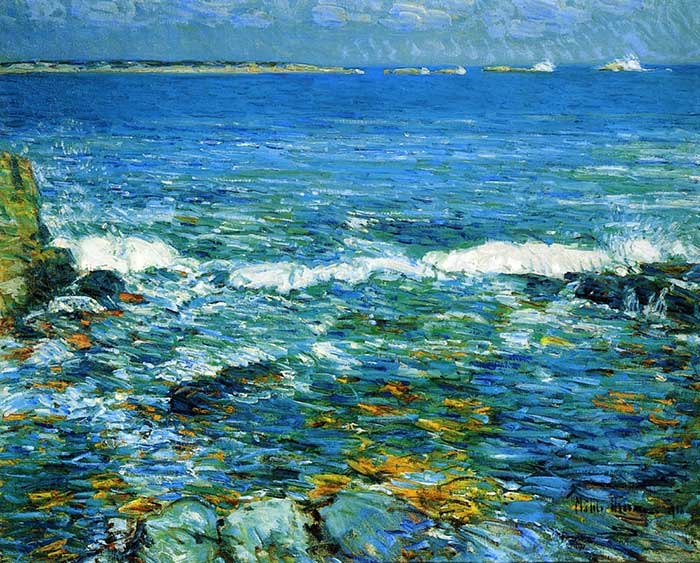
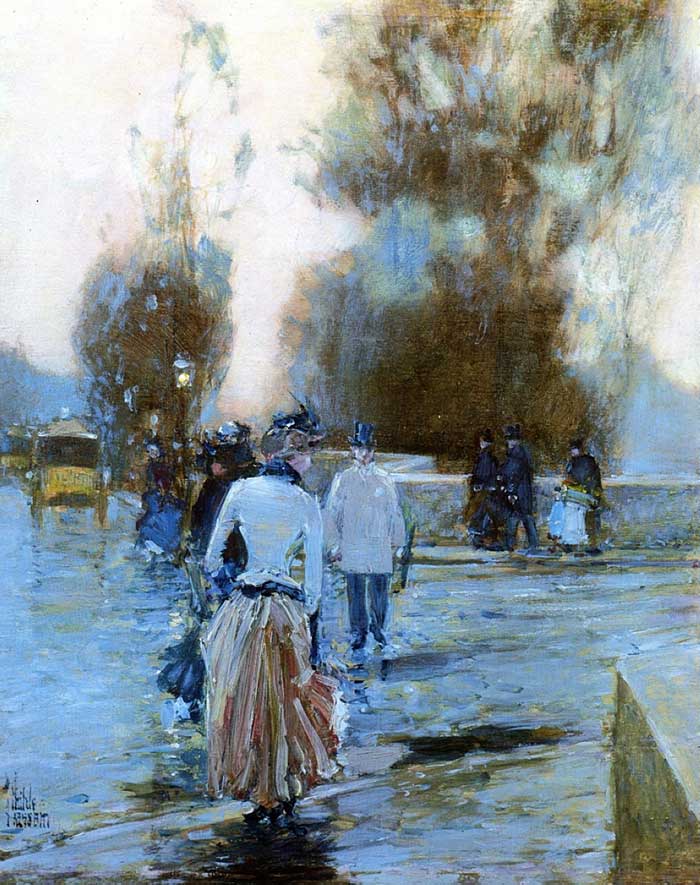



If you enjoyed this post, then this book may interest you – American Impressionist: Childe Hassam and the Isles of Shoals (affiliate link).
Thanks for Reading!
Thanks for taking the time to read this post. I appreciate it! Feel free to share with friends. If you want more painting tips, check out my Painting Academy course.
Happy painting!

Dan Scott
Draw Paint Academy

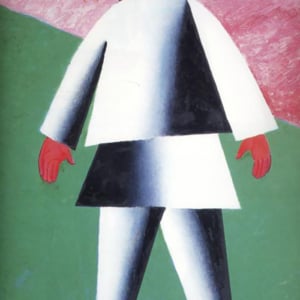

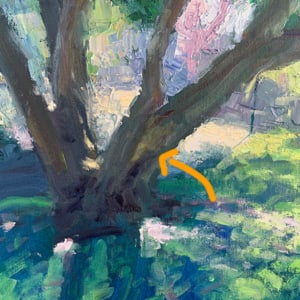
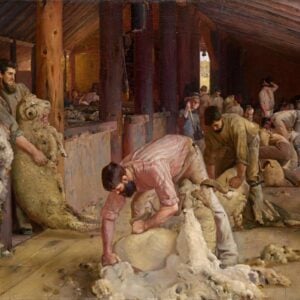


I just love the Goldfish Window. The bowl and table are a wash in beautiful reflective color. Thank you for introducing this artist, I wish I could watch the process of creating such beauty.
the untitled one where the girl is in the park eating an ice cream cone caught my attention. I love the subtlety of color in all the greenery.
I like the July Night. Complementary colors are balanced by an almost black achromatic silhouette.
POPPIES
I love “July Night”.The drama created by the ‘muted’ palette offsets the colour punch created by the balloons.
I like Duck Iland and Poppies that Picture is Lovely wthout beeing too sweet. Viveca Dahlen
Hello,
I’m am retired and have recently taken up painting fine art pictures. When working on a face where the skin color tone appears to be dull, how can I make the skin tone pop? What colors would I use. I am using oil and find that it is forgiving. But when I use acrylic, not so much. Thank you for your input.
Sharon
I’m just a reader of this post, but I was an art teacher, and have shown my own paintings in galleries.
How a color appears depends on what you surround it with. If your skin tones have pink in them, use the opposite color near it, which would be green. Here is what are called complementsry colors, which are really opposites.
Red- Green
Orange- Blue
Yelliw- Violet- These are opposites on the color wheel. In between those colors would be other opposites- RedOrange- Blue Green
Yellow Orange- Blue Violet
Red Violet- Yellow Green
Just look up a color wheel online, and you will see how they are opposite on the wheel.
If you surround any color with it’s opposite, it will appear brighter.
If you surround any color with a similar color, it will not appear as bright.
When mixing colors for skintones, try to avoid adding black or grey, which may make it appear muddy. Most of the Impressionists never used black, but used a mixture of dark colors in it’s place.
When mixing a skintone, depending on the skincolor, you might use some red, white, a bit of yellow, brown, and to dull it down if it’s too bright or for shadows, add a little of the opposite color, like blue or green or violet depending on what colors you put in the skintone.
Color is VERY IMPORTANT in painting. Look online, or try to find some books or courses on COLOR THEORY. Good Luck!
Sunset at Sea! Amazing color!!!!
I enjoy your e-mails. Sorry I haven’t responded much but we’re moving and don’t have a lot of time. Look forward when we are settled. I liked most of his paintings. The greens were so vibrant. I liked goldfish window and flower girl. Thanks for sharing
No problem Bonnie glad you enjoy them 🙂
Dan
I especially love three of these: the Room of Flowers, The Sea and the Goldfish Window. For me, the strength of light intensified by the saturated colours is stunning and something I wish very much to achieve.